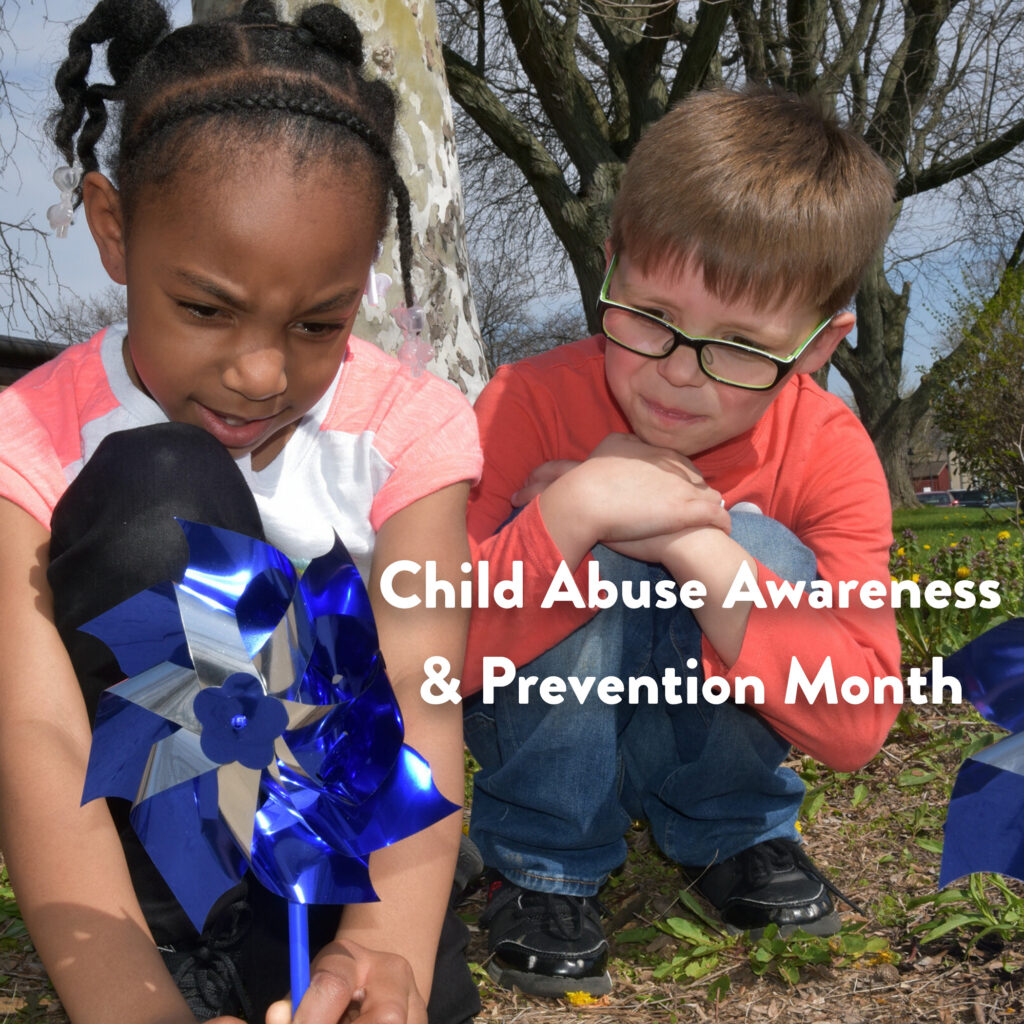Child Abuse Awareness & Prevention Month

Throughout April, you might notice gardens of blue pinwheels sprouting up in your neighborhood. While whimsical, these gardens actually represent a difficult reality that deserves our attention: child abuse. April is Child Abuse Awareness and Prevention Month. Last year in Virginia, Child Protective Services received over 120,000 reports of possible child abuse, involving over 52,000 children. Here in Fairfax County, over 7,500 reports of abuse were called in and over 260 of our community’s children were found to be abused or neglected.
No child should experience maltreatment or the trauma of being removed from their family and placed into foster care. By committing to prevent child abuse before it even occurs, while also properly supporting children and families who are overcoming abuse and neglect, we can help them to become better, stronger and more resilient.
It is important to recognize that child abuse and neglect are preventable, and we as a community play an important role in reducing family violence and trauma. When we provide families in our community with the knowledge and tools for prevention, such as parenting classes, we are working together to build stronger children and families. And when children and families flourish and thrive, we all do.
In order to prevent child abuse, we need to understand what causes it. While there is no single cause of child abuse, there are many risk factors that put a child at risk including, but not limited to: generational trauma, substance abuse disorder, mental health struggles, distress caused by poverty and a lack of other critical resources, and a lack of supportive family connections. Below are strategies we can focus on to prevent child abuse and neglect.
Financial Security
When families have financial resources and can avoid the hardships of poverty, they are less likely to experience the stress brought on by financial challenges. For example, in July of 2021 when the first payments of the Earned Income Tax Credit were distributed, over 3 million children avoided poverty. In addition to being a beneficial financial resource for families, the tax credit also demonstrated positive effects on mental health, school performance, and infant mortality rates. Other financial factors that reduce the risk for child abuse and neglect include affordable childcare, paid parental leave, and flexible, yet consistent, work schedules for parents.
Education
Communities can better support children and families when they provide public education that teaches the importance of a child-first mindset. We’ve all heard the phrase “it takes a village,” and when we focus on providing the right education for parents and communities, we can actually become that village for children and families. Shifting our collective focus to positive and skill-based parenting can build strong connections with children and parents in our communities and reduce both stressors and stigmas that come with not knowing how to parent in a healthy way.
Positive Childhood Development
The first three years of a child’s life are proven to be the most critical in their development. Providing a child with a healthy, happy, and stable childhood is vital for proper brain development, social-emotional learning skills, and overall well-being. Supports and programs such as Zero to Three establish healthy habits and skills for parents that lead to a reduction in Adverse Childhood Experiences (ACEs), reducing the long term effects of childhood trauma. The benefits that come with providing a child with a good start may not seem to directly link with child abuse and neglect, however, programs that directly set a child up for developmental success also positively impact the stress levels and livelihoods of their parents, reducing the risk for abuse and neglect.
Positive Youth-Adult Relationships
Children thrive and are more successful when they have a trusted adult in their life. A mentor, sports coach, dedicated teacher, or CASA volunteer can make a significant impact on the life of a child. These caring adults can serve as a watchful eye and catch early signs of abuse or neglect, and can frequently be the catalyst to getting the family the help and resources they need. These adults may also serve as an ear for the youth, making them feel heard while helping them navigate challenges. As former foster youth Josh Shipp puts it, “…every kid is one caring adult away from being a success story,” and when a child has many caring adults in their life, their future is brighter and they are better equipped to break generational cycles of trauma.
Intervention
The most direct form of prevention–intervention–comes in many forms for children and families and typically results in direct services that strengthen the family unit. Interventions can include ensuring children have enhanced primary care, trauma-based therapies for families, and treatments to overcome mental health challenges and substance abuse disorders, just to name a few. When we invest in families through these types of direct service programs in our community, we help to ensure that children and families receive the support and resources they need, especially when they are most vulnerable.
